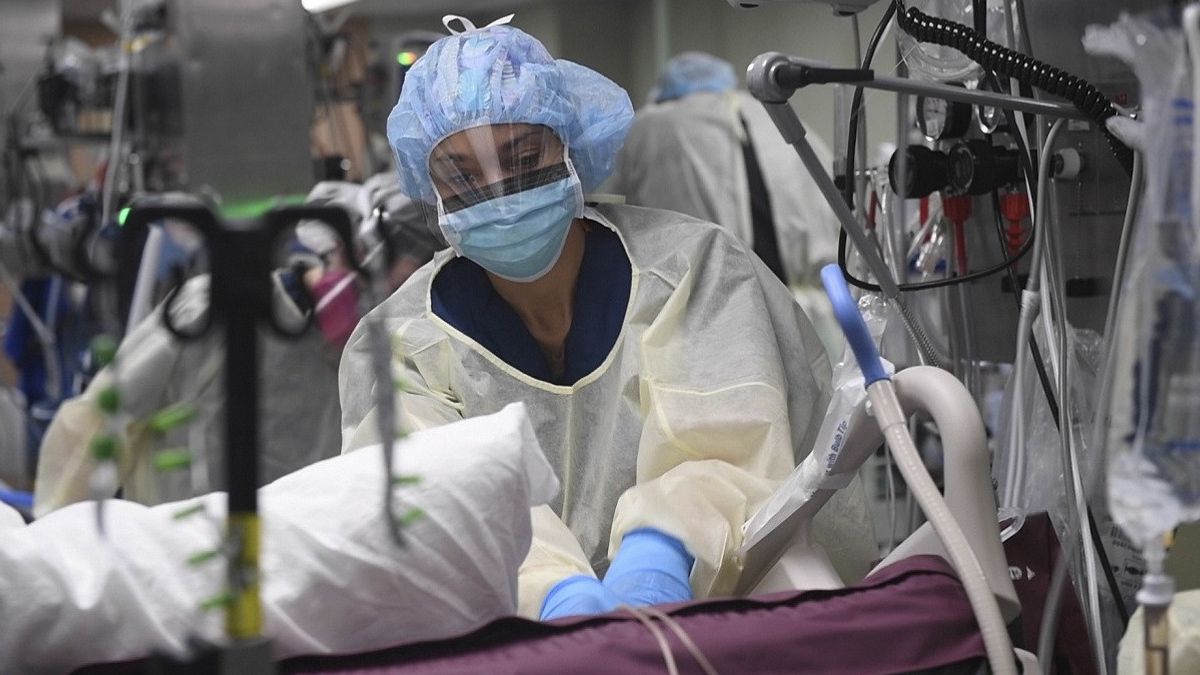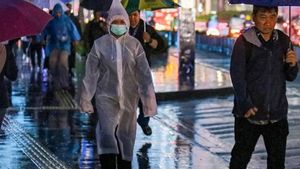JAKARTA - Gas and firewood stoves at a crematorium in the western Indian state of Gujarat, have been running for so long without a break during the COVID-19 pandemic that metal parts are starting to melt.
"We are working around the clock with 100 percent capacity to cremate the body on time," Kamlesh Sailor, administrator of the crematorium in Surat, told Reuters some time ago.
Yes, as the COVID-19 case explodes in India, a number of major cities are reporting much greater numbers of cremasu and burials under coronavirus protocol than the official COVID-19 death toll, according to crematorium and funeral officials, media and government data reviewers.
India's daily COVID-19 cases soared a record 273,810 on Monday earlier this week, and deaths rose 1,619 to 178,769. Hospitals are short of beds, oxygen and primary medicine, and infections have passed 15 million, the second highest number in the world after the United States.
A senior state health official said the increase in the number of cremations was due to bodies being cremated using the COVID-19 protocol even if there was a 0.1 percent chance the person was positive.
"In many cases, patients come to the hospital in a very critical condition and die before they are tested, and there have been cases where the patients were taken to hospital to death, and we do not know whether they are positive or not," the official said.

In Surat, Gujarat's second largest city, the Kurukshetra Sailor crematorium and the second crematorium known as Umra, have cremated more than 100 bodies per day under COVID protocol over the past week, far exceeding the city's official daily COVID-19 death toll of around 25, according to for interviews with workers.
Prashant Kabrawala, trustee of the Narayan Trust, which runs the Ashwinikumar crematorium, refused to provide the number of bodies received under the COVID-19 protocol, but said cremations there had tripled in recent weeks.
"I have been regularly going to the crematorium since 1987, and been involved in day-to-day functions since 2005. But I haven't seen so many bodies come for cremation in all these years, even during the bubonic plague in 1994 and the floods in 2006, "he said.
In Lucknow, the capital of the densely populated state of Uttar Pradesh, data from the largest COVID-19 dedicated crematorium, Baikunthdham, shows double the number of bodies arriving on six different days in April than government data on deaths from COVID-19 citywide. .
The figure does not take into account the city's COVID-19 second crematorium, or burials in the Muslim community which makes up a quarter of the city's population.
Crematorium chief Azad, who only has one name, said the number of cremations under the COVID protocol had increased fivefold in recent weeks.
"We work day and night. The incinerator is operating full time, but there are still many people who have to wait with the bodies for the final ceremony," he said. A Uttar Pradesh government spokesman did not respond to a request for comment.
Elsewhere, India Today reported that two crematoriums in Bhopal, the capital of the state of Madhya Pradesh, saw 187 bodies cremated following the COVID-19 protocol in four days this month, while the official death toll for COVID-19 was only five.
Last week Sandesh, the Gujarati newspaper, counted 63 bodies leaving a special COVID-19 hospital for burial in the state's largest city, Ahmedabad, on the day government data announced 20 deaths from the coronavirus.

The Lancet medical journal noted that last year four Indian states, which accounted for 65 percent of deaths from COVID-19 nationwide, each recorded 100 percent of deaths from the coronavirus.
However, Fewer than a quarter of all deaths in India are medically certified, especially in rural areas, meaning the true COVID-19 death rate in many of India's 24 other states will probably never be known.
India is not the only country whose coronavirus statistics are questionable. However, workers' testimony and a growing academic literature show that deaths in India are underreported compared to other countries.
Bhramar Mukherjee, a professor of biostatistics and epidemiology at the University of Michigan in research on the first wave of COVID-19 in India concluded that there were 11 times more infections than reported, in line with estimates from studies in other countries. Meanwhile, the number of deaths was two to five times more than reported.
"Most of the deaths are not registered so it is impossible to calculate validation," Mukherjee said.
The English, Chinese, Japanese, Arabic, and French versions are automatically generated by the AI. So there may still be inaccuracies in translating, please always see Indonesian as our main language. (system supported by DigitalSiber.id)













